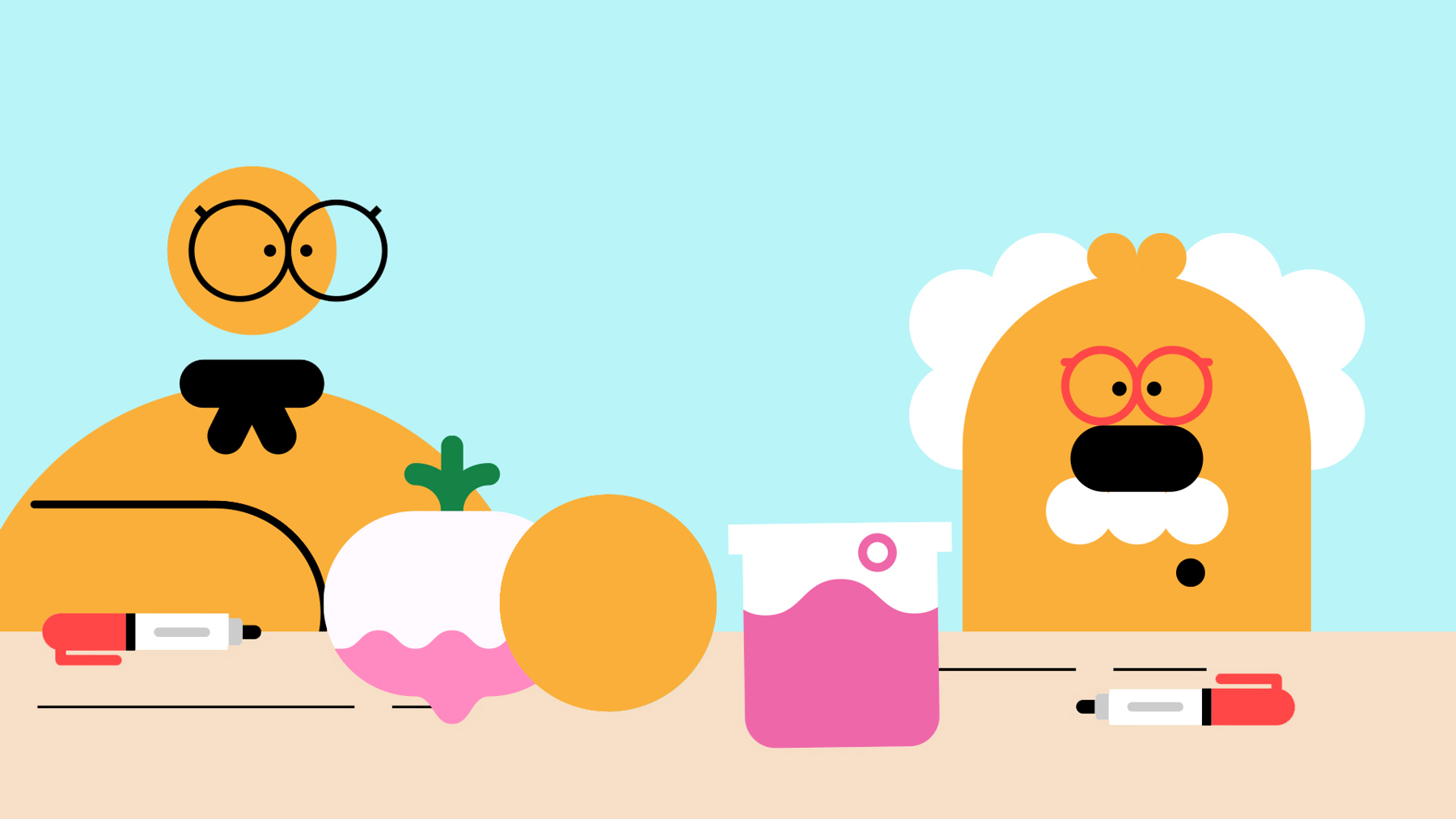
Dye another day
You’ll need
- Something to protect surfaces (for example, newspaper or tablecloths)
- Disposable gloves
- Access to water
- Natural dyes (see examples below)
- Natural white cotton fabric (avoid synthetic fabrics)
- Kitchen equipment, including pots and pans, a kettle, sieves, a chopping board, measuring cups and a large container or jar
- Utensils, including a wooden spoon, tablespoon, tongs and a knife
- Access to stoves or kettles
- Salt
- Vinegar
- String or rubber bands

- The best scientists make a prediction, then do the experiment and see how close they were to being right. If you’re working towards your Scouts Scientist Activity Badge, you should do the same. Choose a question to investigate and answer during the activity. For instance, you could choose a fabric and a natural material and predict what colour the fabric will come out. Work together and see the effect of changing the dye, amount of material, length of time simmering, the shape of the ties or the dyeing technique used. If changing the fabric type, remember to only pick other natural fabrics.
- Follow the instructions the first time you run your experiment. But this should just be a part of your overall plan and investigation. Testing and retesting your results might require you to change something about the activity and then try it again. Learn about the science of dyeing from the information on this page, then discover what it’s really like for yourself!
Before you begin
- As this activity takes a long time, it may need to be run across more than one session, or at a camp.
- If needed, have everyone bring along to the session(s) a plain cotton T-shirt, sock or pillowcase that they wish to dye. Remind them to wear clothes to the session(s) that they don’t mind getting stained.
- You may need to use kitchen facilities for this activity, as you need to heat up lots of water and keep it simmering. Remember to risk assess all facilities used for the activity and make sure you have enough leaders and helpers to supervise everyone using them. If using boiled water from a kettle, the fabric will take much longer to dye and the dye ingredients should be cut as small as possible and left in the solution for more time.
- Cover the work surfaces you’re going to be using with old table covers or old newspaper. If you’re short of time, you could also prepare the fabric for dyeing beforehand.
- Plan ahead and send out the instructions in advance so everyone knows what equipment they’ll need to do this activity online at home. You could think about safely delivering the equipment to group members if it’d be appropriate and manageable for your group.
- Make sure there’s an adult around to help supervise the activity at home.
- This activity takes a while to complete – think about using it as part of an online camp at home or an afternoon of activities, rather than a regular evening meeting.
- You could set this challenge for everyone to complete in their own time and use your online meeting to introduce the activity and share your finished tie dye creations.
- Check out the advice on using Zoom and other popular digital platforms and the guidance on being safe online.
Prepare your fabric
- It’s easiest if everyone splits into groups of between two and four people and then each group works on a prediction, batch of dye and a type of fabric between them. Each group should check they’ve got what they need and gather at their work surface.
- To prepare your chosen fabric, mix half a cup of salt with eight cups of water and bring it to the boil. Add the fabric and leave to simmer in the solution for at least half an hour, stirring often, before dyeing. Anyone using vegetable-based dyes should mix one part vinegar with four parts water instead of salt, add the fabric, leave to simmer and stir in the same way, before dyeing.
- Remove fabrics carefully from the hot water with tongs and place them in a sieve. Supervise this bit closely! Run under some cool water from a tap. When cool, wring out the excess water.
- The fabric is now ready to be tied. Using a copy of the ‘Tie-dye folding instructions,’ everyone should use rubber bands or string to tie it up tightly to create their pattern.
Prepare your dye
- To prepare the dye, put on the gloves and begin cutting the natural materials into small pieces on your chopping board. Put the pieces in a pot and pour over water. This is usually two parts water for every one part of the material, but for powders like turmeric, use three or four cups of water for every one or two tablespoons.
- Bring the mixture to the boil and simmer for at least half an hour. The longer it simmers, the more colourful the dye should turn out.
- When done, carefully strain the dye into a large container that the fabric fits into, and leave to cool.
Dye your fabric
- It’s time to dye the fabric. Everyone will need to wear gloves. Place the tied-up fabric into the container with the dye and leave it to sit for a while.
- Once the fabric has turned the desired colour, carefully remove each piece of fabric from the dye and rinse it with cool water. Do this until the runoff water runs clear.
- Remove the rubber bands or string and hang the fabric to dry. Hang the fabric outside if possible. Think about covering the floor beneath any fabric drying inside.
- Groups should record their results, feedback to each other and see if their earlier predictions were correct.
Lots of natural materials can be used to make dyes. Part of the fun is experimenting with new materials to see what colour they make and how effective they are for dyeing fabric. Depending on what you’re able to get hold of, you could also vary the time you soak and simmer it for, or the amount of natural material you use. Here are some natural materials and the colours to look out for:
- Blueberries (purple)
- Yellow onion skins/turmeric (yellow)
- Beetroot (pink)
- Cherries with vinegar (red)
- Red cabbage with white vinegar (blue)
- Spinach with white vinegar (green).
- Visible light is made up of lots of different wavelengths of light combined together. At the start of the activity the fabric reflects all these wavelengths, we see this as ‘white’.
- The natural materials used to make dyes contain molecules called ‘chromophores.’ They absorb some of the wavelengths of light, so that only some other wavelengths reflect. That means that we see a different colour.
- Boiling the natural material transfers the chromophores to the water. When the natural fabric is added, the molecules are absorbed and bond to the fibres, making a colour pattern.
- In real life, synthetic dyes are used much more than the natural ones we just used. See if anyone can guess why. Can anyone find out about any natural dyes that are still used today?
- We see all colours in the same way explained in this activity, with certain objects reflecting or absorbing different wavelengths to appear as different colours. See if anyone can think of any uses for colours, other than to dye fabric, and challenge the group to think about natural alternatives to these. Some examples might be artist’s paints or food colouring.
Reflection
In this activity everyone worked together in groups to bring a new lease of life to a plain t-shirt or piece of fabric. Ask everyone whether they enjoyed working together in the activity. What were some good things about working with other people, and what did they find difficult about working in their groups? While waiting for their dyes to simmer everyone could think of other ideas for projects they could work on together to upcycle other items or bring some more colour to other areas of their community.
Using natural dyes may take some time, but the materials for doing it are all around us. Wherever you are, so long as you’re able to boil some water and soak your fabric, you should be able to find materials to use as dyes in nature. Why is it better for the planet to use the dyes nature gave us, and not synthetic ones made from chemicals?
Safety
All activities must be safely managed. You must complete a thorough risk assessment and take appropriate steps to reduce risk. Use the safety checklist to help you plan and risk assess your activity. Always get approval for the activity, and have suitable supervision and an InTouch process.
- Science
Supervise young people, and only do science activities that are advised and age appropriate for your section. Test activities first, to make sure you’re confident you can lead them safely. Use protective clothing where necessary.
- Fires and stoves
Make sure anyone using fires and stoves is doing so safely. Check that the equipment and area are suitable and have plenty of ventilation. Follow the gas safety guidance. Have a safe way to extinguish the fire in an emergency.
- Cooking
Teach young people how to use cooking equipment safely. Supervise them appropriately throughout. Make sure it’s safe to use and follow manufacturers’ guidelines for use.
- Food
Remember to check for allergies, eating problems, fasting or dietary requirements and adjust the recipe as needed. Make sure you’ve suitable areas for storing and preparing food and avoid cross contamination of different foods. Take a look at our guidance on food safety and hygiene.
- Sharp objects
Teach young people how to use sharp objects safely. Supervise them appropriately throughout. Store all sharp objects securely, out of the reach of young people.
- Outdoor activities
You must have permission to use the location. Always check the weather forecast, and inform parents and carers of any change in venue.
Find ways to use multiple dyes on one piece of fabric. You could do this by finding a way to dip-dye different parts of the fabric, by having a tied end or corner hang in the dye until the process is complete. Retying the fabric in different patterns to dye with a second colour will also make this more of a challenge.
- Double-check whether anyone has any allergies or skin sensitivities to any of the materials used in this activity. Only source materials that are suitable for everyone to use safely.
- Make sure everyone has everything they need to complete the tasks in this activity. Pair up or have helpers lend a hand where needed.
All Scout activities should be inclusive and accessible.
Have a fashion show or troop your colours to show off the clothes or flags you’ve made. To show others how you dyed your objects, you could create a dyeing checklist for them to follow, based on your experiment.
You could look into completing a CREST Award while working towards your Scouts Scientist Activity Badge – find out more here.
Young people could choose from the natural dyes and fabrics on offer, to personalise their own experiments.

